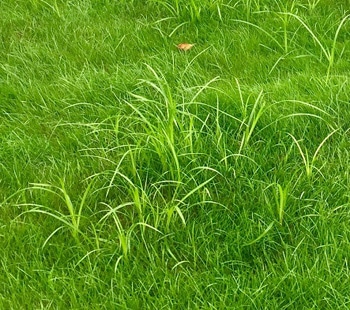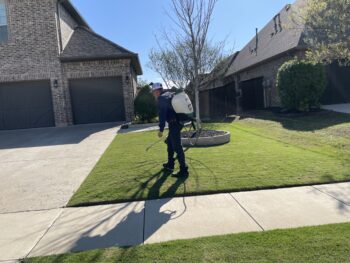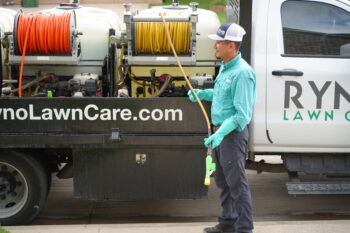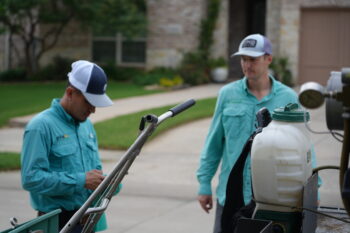Let’s face it: nutsedge is the uninvited guest of the plant world. You didn’t ask for it. You didn’t want it. But there it is, popping up in your lawn like a smug, neon-green troll with a vendetta. If you’ve ever stared at your yard and muttered, “What kills nutsedge but not grass?” while waving a bottle of herbicide like a magic wand, this article is your new best friend.
Buckle up, folks. We’re diving into the world of lawn care warfare, where the enemy is a weed that laughs in the face of Roundup.
What Even Is Nutsedge?
First off, let’s get acquainted with the villain of our story. Nutsedge (a.k.a. nutgrass or water grass) isn’t your average dandelion. Oh no. This botanical menace grows faster than a teenager’s TikTok following, sprouts cheerful yellow or purple flowers to mock you, and has a root system that’s basically the underground version of a hydra. Pull one, and three more pop up to audition for a horror movie sequel.
Why it’s the worst:
- It thrives in soggy soil, overwatered lawns, and the tears of frustrated gardeners.
- It’s resistant to most common herbicides, which is like showing up to a knife fight with a spoon.
- Its tubers (those little nut-like bulbs underground) can survive for years, meaning this weed has a better retirement plan than you do.
The Golden Question: What Kills Nutsedge But Not Grass?
Before you grab a flamethrower and channel your inner action hero, let’s talk strategy. The key to winning this battle is precision. You want to annihilate nutsedge without turning your lawn into a post-apocalyptic wasteland. Here’s the lowdown on your arsenal:
**1. Herbicides: The “I’m Not Messing Around” Option
Not all weed killers are created equal. Broad-spectrum herbicides like glyphosate (Roundup) are the equivalent of carpet-bombing your yard—effective, but they’ll vaporize your grass too. Instead, opt for selective herbicides that target nutsedge specifically. Look for ingredients like:
- Sulfentrazone (Found in Ortho Nutsedge Killer): The Terminator of nutgrass. It’s fast-acting and grass-friendly.
- Halosulfuron-methyl (Found in SedgeHammer): Perfect for warm-season grasses like Bermuda or Zoysia. It’s like sending nutsedge a strongly worded eviction notice.
Pro tip: Apply on a sunny day when nutsedge is growing actively. The weed will soak up the herbicide like a sponge, while your grass yawns and stays pristine.
**2. Cultural Controls: Outsmarting Nutsedge with Jedi Mind Tricks
If chemicals aren’t your jam, you can fight nutsedge with sheer cunning. This weed loves wet, compacted soil, so:
- Fix your drainage: Stop overwatering. Let your lawn dry out between waterings—nutsedge hates a drought.
- Mow high: Keep your grass taller (3–4 inches) to shade out nutgrass and crush its dreams of sunlight.
- Improve soil health: Aerate compacted soil and add organic matter. Healthy grass = unhappy nutsedge.
Think of it as giving your lawn a spa day while giving nutsedge a one-star Yelp review.
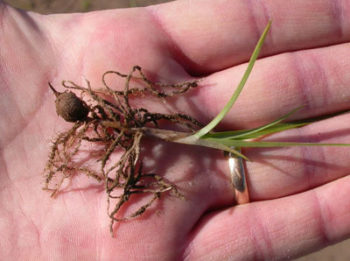
**3. Manual Removal: For the Masochists Who Enjoy Pain
Sure, you could yank nutsedge out by hand. But unless you’ve got the patience of a saint and the back muscles of a WWE wrestler, this method is… optimistic. If you insist:
- Dig deep with a trowel to remove the entire root system (tubers included).
- Dispose of the plant in a sealed bag—do not compost it, unless you want a nutsedge uprising in your garden.
Warning: This is the horticultural version of playing Whack-a-Mole. Proceed with caffeine.
The Forbidden Lore: Home Remedies That May or May Not Summon Demons
Desperate times call for desperate measures, and the internet is full of “life hacks” for killing nutsedge. Let’s review these with a healthy dose of skepticism:
- Vinegar: A 20% acetic acid solution might fry the leaves, but it’ll also burn your grass and leave the roots unharmed. Result: a dead patch of lawn and nutsedge giggling underground.
- Bleach: Please don’t. You’ll sterilize your soil and possibly anger the lawn gods.
- Boiling water: Effective for driveway cracks, but on lawns? You’ll scald the grass and achieve nothing but regret.
Don’t risk it, go to our weed control service page for expert help.
FAQ: Your Burning Nutsedge Questions, Answered
Q: Why does nutsedge keep coming back after I spray it?
A: Because nutsedge is the Jason Voorhees of weeds. You have to kill the tubers, not just the leaves. Repeat treatments are key!
Q: Can I just cover nutsedge with mulch?
A: Mulch is like a cozy blanket for this weed. It’ll punch right through it, laughing at your naivety.
Q: Is nutsedge edible? Can I at least eat my enemy?
A: Technically, yes—it’s related to papyrus, and ancient Egyptians used it for… something. But unless you’re into gritty, bitter salads, maybe stick to kale.
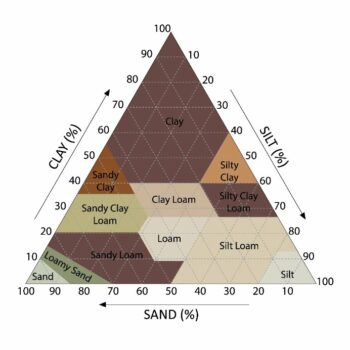
The Final Boss: Preventing Future Nutsedge Invasions
Once you’ve won the battle, here’s how to keep nutsedge from staging a comeback tour:
- Test your soil pH: Nutsedge adores acidic soil. Lime it up if needed.
- Reseed bare spots: Thick grass = fewer openings for weeds to exploit.
- Stay vigilant: Spot-treat new nutsedge ASAP. Think of it as a zombie apocalypse—early detection saves lives.
Conclusion: Reclaim Your Lawn (and Your Dignity)
Nutsedge may be a tenacious foe, but with the right tools and a dash of dark humor, you can send it packing. Remember: this isn’t just about winning a turf war. It’s about restoring peace, harmony, and the right to host backyard barbecues without your aunt Karen asking, “What’s that weird grass?” So arm yourself with selective herbicides, fix that drainage, and go forth. Your lawn—and your sanity—will thank you.
Now if you’ll excuse me, I have a date with a spray bottle and some unresolved anger issues. 🌱💥

